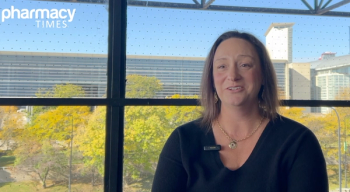
Concerns About Medication Adherence Grow Amid COVID-19 Pandemic
Some pharmacists and other health care experts are worried that patients, especially those with underlying conditions, may stop adhering to their medication regimens.
As COVID-19 continues to infect a growing number of people in the United States, some pharmacists and other health care experts are concerned that patients, especially those with underlying conditions, may stop adhering to their medication regimens.
Nearly half of Americans take at least 1 prescription drug, and 1 in 4 take 3 or more drugs, according to the CDC.1
Medication nonadherence is an issue in the best of times. Studies have consistently shown that 20% to 30% of medication prescriptions are never filled, that about 50% of medications for chronic disease are not taken as prescribed, and that lack of adherence costs the health care system at least $100 billion each year.2
But these are not the best of times. Much of the country is locked down because of the pandemic, and businesses are suffering as a result, leading to furloughs and layoffs.
For the week ending March 28, 2020, 6.6 million US workers filed for their first week of unemployment benefits, a historic high, according to the Department of Labor.3
First-time claims for unemployment benefits have surged more than 3000% since early March.4
The souring economic picture may mean that many patients can no longer afford their prescriptions, particularly those who were already struggling.
“I think it will depend a lot on how families can package unemployment with money from the CARES Act and other state resources,” Evan Vickers, BS Pharm, owner of Bulloch’s Drug Store in Cedar City, Utah, said in an email interview.
Vickers, a Republican, who is also the Utah state senate majority leader, was referring to the $2 trillion Coronavirus Aid, Relief, and Economic Security Act (CARES) that President Donald J. Trump signed into law on March 27, 2020.5
“If it gets to a point of choosing between food for families and medications, then adherence could be an issue. Medicaid will pick up a good deal of the slack, but it takes time to transition from commercial insurance to Medicaid at the time of a job loss,” Vickers said.
“It will be a very interesting few months,” he said.
Others agree.
“It’s well known that unstable living environments, limited access to health care, lack of financial resources, and cost of medication have all been associated with decreased adherence rates, and that poor medication adherence leads to frequent rehospitalizations and poor outcomes for patients with chronic conditions,” Jason Rose, chief executive officer at AdhereHealth, said in an email interview.
AdhereHealth of Franklin, Tennessee, provides technology solutions for medication adherence.
In addition, some people may simply not be able to or want to leave their homes right now.
“Now, [with] the closure of businesses, paired with shelter-in-place, quarantines, and safer-at-home guidance, a patient’s normal medication access routines via caregivers, rideshares, and other support systems has been reduced or eliminated entirely. We all need to self-isolate for the greater good, but people with disability and chronic illness must be especially vigilant,” Rose said.
“Unfortunately, many of them don’t have support and are going without care, and in many cases coping without medication and other necessary treatments,” he said.
Pharmacy deliveries and telehealth, while a blessing for many, also present hurdles.
Rose pointed out that mail order and retail drug stores use public couriers, such as Federal Express and UPS, for the standard delivery of medications to patients.
“Consider how these packages will be delivered, and how patients will be able receive or retrieve the packages,” he said.
“Public carriers do not schedule the delivery with the patient and usually leave it at the door or in the mailbox. For patients who are immobile or have severe physical limitations, this isn’t a viable option,” Rose said.
Other drawbacks to traditional home delivery programs include the lack of capability to accept cash on delivery, deal with mail theft, or space out copayments, as the patient must have a credit or debit card on file, Rose said.
“Each patient is unique, and will experience very specific social issues, including language barriers, or education attainment, that will ultimately stand in the way of medication adherence,” Rose said.
Meanwhile, telehealth is not a viable option for everyone, as many patients do not have computers, internet access, or smartphones, he said.
Of course, lack of adherence highlights the responsibilities of pharmacists, and also the opportunities for them to help patients.
“Pharmacists can play an important role in adherence by ensuring patients have an adequate supply of their medications during the COVID-19 pandemic,” said Jennifer Gershman, PharmD, CPh, a drug information pharmacist, and Pharmacy Times® contributor who resides in South Florida.
“Many independent pharmacies and chains, such as CVS and Walgreens, are offering free medication delivery, which will help ensure that patients can get their medications without having to come in person to the pharmacy. Many insurance companies are covering drug costs for extra drug supplies, but if patients don’t have insurance or if there are cost issues, then coupons from companies such as GoodRx can help,” said Gershman, who writes the MTM Consult column in each issue of Pharmacy Times®.
Pharmacists should also check in with patients who have mental health conditions, such as depression, as social distancing could have an impact on them, Gershman said.
“Make sure they are still taking their medications and are able to connect with their health care providers, family, and friends through technologies such as Zoom,” Gershman said.
REFERENCES
- CDC. Therapeutic drug use. cdc.gov/nchs/fastats/drug-use-therapeutic.htm. Updated January 19, 2017. Accessed April 3, 2020.
- Viswanathan M, Golin CE, Jones CD, et al. Interventions to improve adherence to self-administered medications for chronic diseases in the United States: a systematic review. Ann Intern Med. 2012;157(11):785-795. https://www.ncbi.nlm.nih.gov/pubmed/22964778 Accessed April 3, 2020.
- US Department of Labor. Unemployment insurance weekly claims. dol.gov/sites/dolgov/files/OPA/newsreleases/ui-claims/20200551.pdf. Published April 2, 2020. Accessed April 3, 2020.
- Tappe A. A 3,000% jump in jobless claims has devastated the US job market. CNN. April 2, 2020. cnn.com/2020/04/02/economy/unemployment-benefits-coronavirus/index.html. Accessed April 3, 2020.
- Werner E, Kane P, DeBonis M. Trump signs $2 trillion coronavirus bill into law as companies and households brace for more economic pain. The Washington Post. March 27, 2020. washingtonpost.com/us-policy/2020/03/27/congress-coronavirus-house-vote/. Accessed April 3, 2020.
Newsletter
Stay informed on drug updates, treatment guidelines, and pharmacy practice trends—subscribe to Pharmacy Times for weekly clinical insights.





















































































































































































































